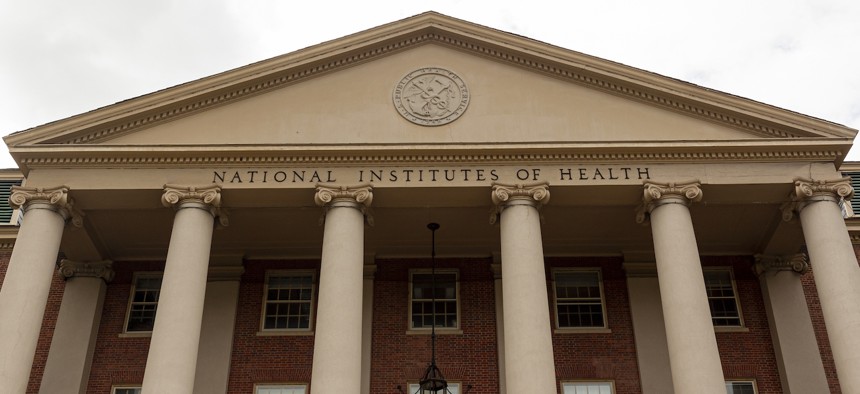
There are roughly 4,800 research fellows employed at NIH. Grandbrothers/Getty Images
NIH Fellows Hope Union Bid Will Bolster Pay and Protections
Organizers hope that forming a union at the National Institutes of Health will help increase pay, benefits and worker protections across academia.
More than 3,000 researchers at the National Institutes of Health on Thursday submitted union cards to the Federal Labor Relations Authority, petitioning the agency to hold a union election for postdoctoral and postbaccalaureate fellows to become a bargaining unit represented by the United Auto Workers.
Unlike in the private sector, employers in the federal government may not voluntarily recognize prospective bargaining units; instead, the FLRA must hold an election on the question of whether to organize. That said, 3,000 union members already represents a decisive majority of the roughly 4,800 research fellows employed at NIH.
Marjorie Levinstein, a union organizer and NIH postdoctoral fellow at the National Institute of Drug Abuse, said she and her colleagues chose UAW over the various unions focused on representing federal workers because UAW already represents a large corps of employees within academia.
“When we had the early meetings in the summer of 2021, the group I was in took a vote [on who to organize with], and two of us—myself included—were at a unionized grad school and we were both unionized with UAW at those grad schools,” she said. “We thought they had a good structure, and in the past few decades UAW has had over 100,000 academic workers join its ranks. It’s not the only research-oriented nationwide union, but it does have significant numbers that we thought we would be in good hands. They know what sort of things are winnable and how to get those into a union contract.”
Levinstein said two of the primary reasons for organizing at NIH involve seeking better pay and benefits, as well as better protections against harassment and discrimination. Unlike most federal workers, NIH research fellows are paid an annual stipend rather than a General Schedule-based salary, and Levinstein said the “hierarchical” nature of science careers make prohibited personnel practices more common.
“Postbaccalaureate fellows need connections and good letters of recommendation to get into grad school, and then in grad school, they need publications, letters of recommendation and networking to get a good postdoc,” she said. “And from postdoc you see the same sorts of things—lots of citations and papers published, and letters of recommendation—to get a faculty position. So if you’re the loud one in the office, your boss might not connect you with the same number of people or projects that get you into high-impact journals and that sort of thing.”
Union organizers hope that by starting a bargaining unit at NIH, they can help boost pay and worker protections across American academia.
“NIH is sort of the benchmark for what other institutes across the country use to determine postdoc, grad student and postbaccalaureate pay,” Levinstein said. “That’s one of our messages: If we’re able to increase our pay scale to be a livable and sustainable wage, that should also affect other institutes across the nation, because they look to NIH to set those sorts of pay scales.”
In a statement, NIH vowed to abide by federal labor law and remain neutral during the union election process. And the agency highlighted its efforts to combat harassment and other unacceptable workplace conduct in the research workforce.
“There are ongoing efforts to support quality trainee experiences to prevent and address workplace harassment, and to assure appropriate work conditions and work hours through a variety of institutionalized processes,” NIH said. “NIH takes workplace harassment very seriously. In 2018, NIH significantly strengthened its anti-harassment program including creating a new NIH civil program and centralizing NIH’s management of harassment allegations.”







